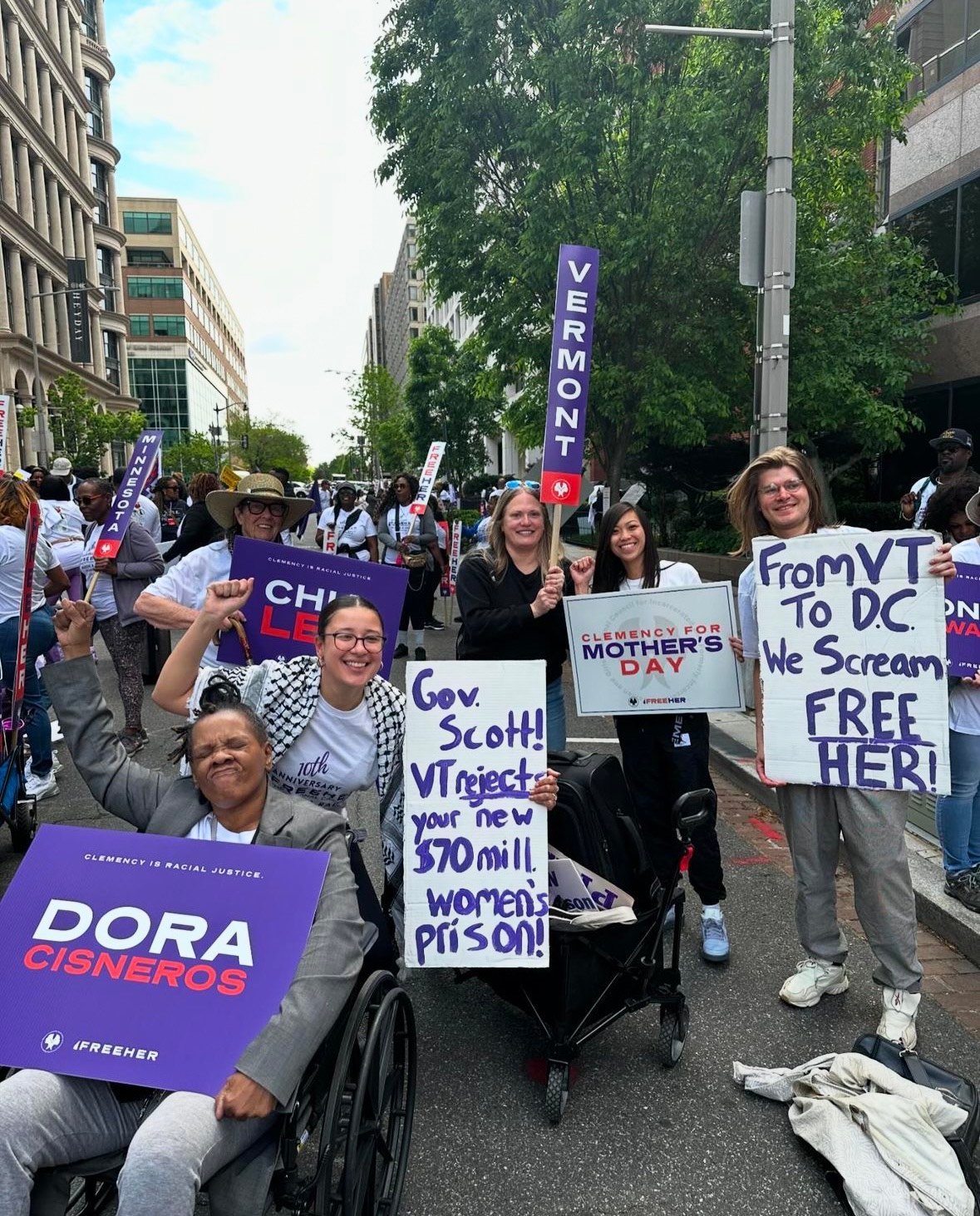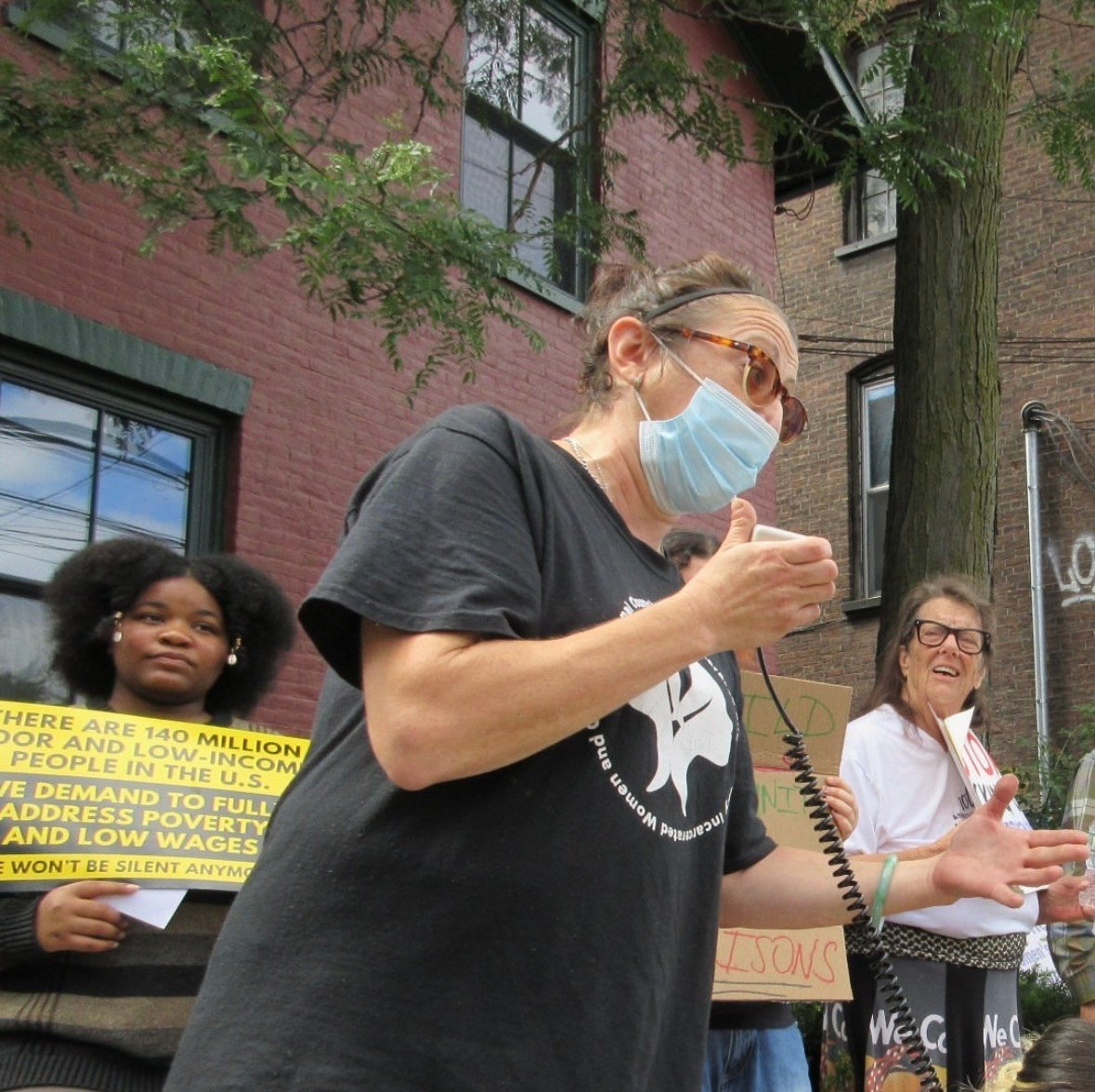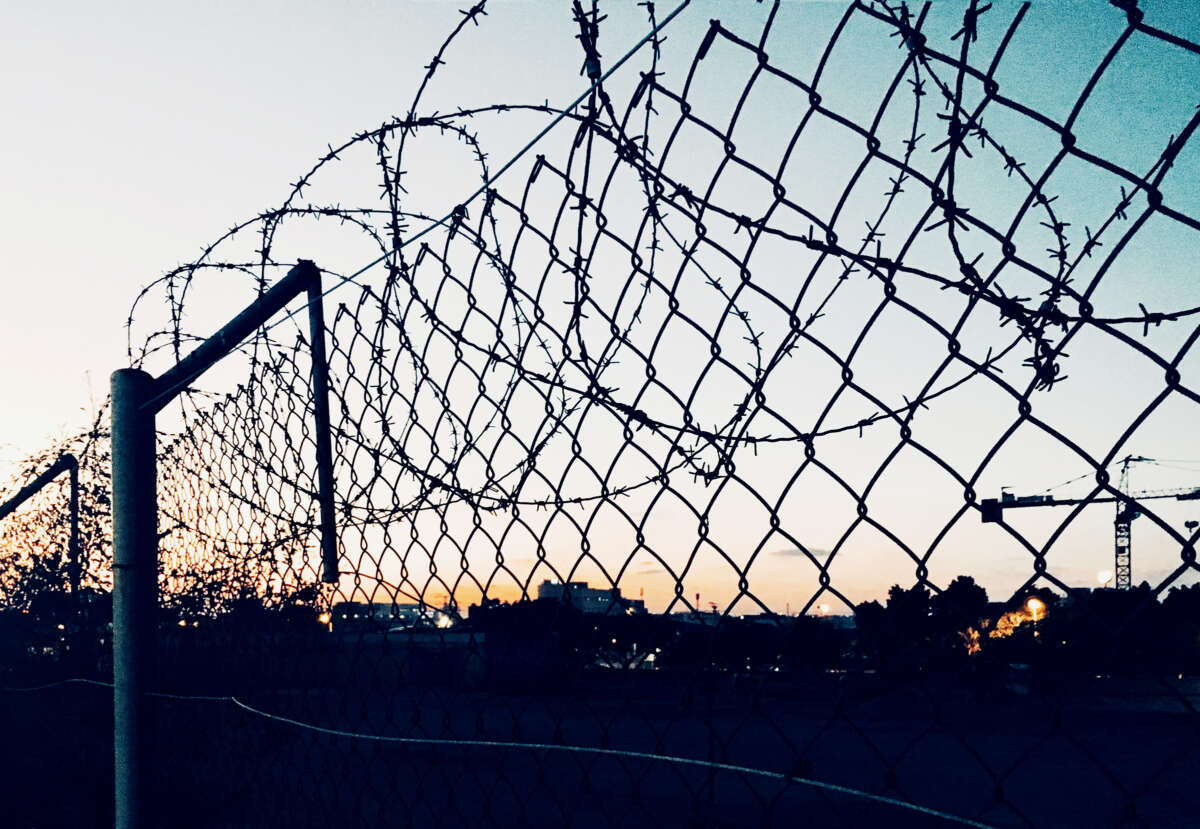Part of the Series
The Road to Abolition
Vermont plans to build four new carceral facilities over the next decade — a project that could cost as much as half a billion dollars. Belying the state’s reputation as a progressive haven, Vermont’s prison-building boom is part of a national pattern. Across the country, state governments and corporations are justifying their expansion of mass incarceration by claiming they are constructing “trauma-informed prisons.” In this interview, abolitionist Jayna Ahsaf speaks with Truthout about the campaign in Vermont to stop the state’s prison-building plans. Ahsaf is an organizer with FreeHer Vermont, a campaign of the National Council for Incarcerated and Formerly Incarcerated Women.
Ashley Smith: Vermont’s government is planning to build a new women’s prison. Why? What impact will this have on the community?
Jayna Ahsaf: In 2012, community providers and whistleblowers published a whitepaper exposing the horrific conditions in the current women’s prison. Its staff were engaged in all sorts of misconduct; they were using drugs, bullying incarcerated women and sexually abusing them. The prison was decrepit. It had maggots. The showers had mold. It was not a place fit for human habitation.
But, instead of granting clemency to women and developing alternatives to incarceration, Vermont’s government decided to build a new $70 million prison. They claimed that it would be “trauma informed” and “compassionate” to address the toxic culture of the old jail.
This is an example of a national trend of “carceral humanism.” Liberals are promoting the idea that there’s a kinder, gentler way of incarcerating people. The Prison Policy Initiative demolished this illusion in an extraordinary article called “Deconstructing the Three C’s.” One of those C’s is compassion.
The federal and state governments, including Vermont, are merely rebranding incarcerating human beings as a way to care for them. But pretty walls and better programming won’t change the abusive culture inherent to putting people in cages.

Formerly incarcerated members of the FreeHer Campaign know this from experience. They have been jailed in these “compassionate” prisons. They can tell you that they do not overcome the trauma of being separated from your loved ones.
The state is also planning to build more prisons. What are their plans? Who is behind these plans and who stands to benefit from them?
They plan to build men’s prisons in addition to the two women’s prisons. The legislators claim two of these are not prisons, but reentry facilities. But this is just semantics; they’re prisons by another name.
And the state is also building juvenile detention facilities in Brattleboro and Vergennes. Vermont’s boom in building carceral infrastructure will lock the state into caging our community members for at least another 50 years.
Who’s benefitting from the prison boom? Who is pushing for it?
We have submitted a records request to find detailed answers to these questions. Already we know that corporations and state institutions are backing the construction of these jails. The architectural firm, HOK, is playing a central role. Like the corporation, HDR, they have raked in money from building so-called compassionate jails.

One of their justifications is that these will be state-run facilities, and that they will be better than private ones. But remember, the old women’s prison is public, and horrific. And, truth be told, most state-run prisons have privatized services, subcontracting them to profit-making private corporations. They charge people for making phone calls, buying paper and envelopes, and even medical care.
State prisons are a money pit for corporations like JPay, which makes millions off emails and other communications. These corporations have endless amounts of money, resources and staff to defend their policies. So, it’s almost impossible to hold them accountable.
In Vermont, we’re targeting the architectural firm, Freeman French Freeman, who created designs for the new women’s prison. We’re targeting them because they’re local, and easier to hold accountable. We just organized a noise demo that scared them so much that they had their staff work from home for the whole day.
Sections of the state bureaucracy are pushing for all this prison construction, first and foremost, the Department of Corrections. They claim they have no choice but to support the new prisons because they have no choice but to cage all the people the judicial system keeps convicting. That points to the culpability of the state’s whole judicial system. They are just as guilty for the prison boom.
We have argued that there are alternatives to incarceration. For example, the reentry facility could be run by service providers that actually take care of people like Pathways VT or Jenna’s Promise. But when we point this out to the politicians and government bureaucracies, they ignore us or play hot potato with us.
Legislators send us to talk to the Department of Corrections who send us to talk to the judiciary and on and on. They pass the buck to avoid taking responsibility for the brutal institutions of incarceration they oversee and run. They want to preserve this system and are frightened by movements like ours.
That’s why they have turned to rebranding their prisons as “trauma informed.” Both state and private interests know that if they can claim their prisons provide medical and substance disorder services, they can continue caging people and lock in their funding streams in perpetuity.
The politicians all have a hand in the cookie jar, from our Republican governor to the Democratic Party’s supermajority in the statehouse. In fact, our biggest disappointments have not been the Republicans or Democrats — we know they stand in lockstep behind the prison-building boom — it’s been so-called progressives, including ones that we thought were going to be our champions.

We had been looking to one of these, Troy Headrick, to spearhead opposition in the House Corrections Committee in the statehouse. But he flipped to the other side, accepted all the carceral humanist rhetoric, and is now supporting the prison construction.
So, most of the politicians support the prison construction boom. None of these people have spent any time behind bars, do not know what they are talking about, and have ignored the formerly incarcerated people that have exposed “compassionate incarceration” for the lie that it is.
You have made the point that this is a massive diversion of funds that could go elsewhere. How should the state spend all this money?
First of all, the sums of money that we’re talking about are enormous for a small state like Vermont. Seventy million dollars is the baseline for the women’s prison and there is no doubt that cost overruns and interest payments will drive it well over $100 million.
And that is just one prison. The ACLU estimates that Vermont will spend $500 million for all four of the prisons. One of the key expenditures that drives the price so high is paying for secure beds. These cost up to a million each.

Some of these are hospice beds for our aging incarcerated population, many of whom have cancer or are chronically ill. They shouldn’t be dying in prison! And money shouldn’t be spent on incarcerating them, it should be spent on life affirming institutions. Imagine what half a billion dollars could do in our state.
For starters, we desperately need money to address the state’s climate disasters. We’ve had two years of horrific flooding. Estimates are that we need $600 million for flood mitigation. We also need $200 million a year to update our state’s dilapidated schools. And we need affordable housing and services to address our homelessness crisis. We have the second-highest homeless population per capita in the country.

We should take the half a billion dollars that is earmarked to cage people and instead spend it on flood mitigation, schools, affordable housing, mental health and drug treatment. But to the establishment that’s unrealistic and expensive.
They try to paint us like we want to live in utopia. Actually, what we’re proposing is not only for the good of the community, but also cheaper.
It costs around $95,000 per year to incarcerate one person. It’s even more expensive if they’re pregnant, elderly or have cancer. Think of all the things we could do with $95,000 a year; we could pay for their rent, programming, treatment, and other services that actually improve their lives and keep people safe.
It’s time for a reckoning in our community about incarceration. Do we want to punish and cage people who harm others? Do we really want to compound that harm with the harm of incarceration? Or do we want to be brave, address root causes of harm and give people who commit harm — and in fact all of us — the money, services and resources we need to thrive?
What has FreeHer been doing to organize to stop the new women’s prison and the whole project of prison construction in Vermont? Who has rallied to your side? Who has stonewalled you? Who are your opponents?
FreeHer is one of many campaigns organized by the National Council for Incarcerated and Formerly Incarcerated Women and Girls. FreeHer operates as a vehicle to encourage abolitionist organizing, providing resources for people to create movements in their own communities.

One of our main projects is advocacy in the statehouse. We have worked with Rep. Brian Cina to introduce anti-carceral bills, most notably the prison moratorium bill, which would put a five year pause on the purchasing, design and construction of all the new prisons. We’ve steadily built community pressure around these bills and testified at caucuses, commissions and committees.
In all this, we always make sure a formerly incarcerated person speaks to politicians and officials. This is vital, because many of them have never been in prison or even listened to anyone who has been, but they’re making decisions about them.
We force the establishment, especially its so-called experts, to listen to their experience and knowledge they have about the failures and corruption of the system of incarceration. We also do public education. We speak on panels, write zines and make presentations in schools.

And last but most importantly, we do direct support of people in prison. Our participatory defense hub helps folks with their criminal legal cases, often leading to victories. All this mutual aid is vital to enable people to thrive when they’re released.
But we’re up against intransigent opponents — the corporations, Department of Corrections, and almost the whole state government. Except for one or two exceptions, the politicians and bureaucrats all politely listen, ignore what our members say and then get back to business as usual, rubber stamping the prison construction projects.
How does Vermont’s prison boom fit into national patterns? Is the U.S. still expanding its carceral state? Where have activists been successful in stopping prison construction?
Our prison boom is very much part of a larger trend. Currently, 40 states have submitted Requests For Proposal (RFPs) or started construction of new jails. What’s particularly disturbing is that many of these states use COVID-19 relief funds to bankroll prison construction.
But our movement has scored some victories against all this, pausing, and in some cases stopping, jail construction. To cite an example, back in 2021 the governor of Alabama approved a $1.3 billion prison, using $400 million in COVID relief funds. They needed banks to underwrite all the loans for the project. So, organizers pressured three banks to pull out and prevented others from stepping in, successfully delaying construction.
The FreeHer campaign in Massachusetts scored a similar victory. The state failed to properly advertise their RFP and illegally proceeded with an internal process. FreeHer exposed this and delayed the prison construction by two to three years.
In another example, the California Coalition for Women Prisoners, which confronts a giant prison system, has focused on campaigning for decarceration on the road to closure. Over the last 10 years, they’ve helped decrease the women’s prison population from 12,668 in 2010 to 3,337 in 2023 — a 70.8 percent decrease.
What is the state of the abolitionist movement now several years after the subsidence of the mass Black Lives Matter protests? What lessons should we learn from the struggle so far?
Perhaps one of the key lessons from the struggle has been that we cannot place hope in government and politicians. They first try to repress our movement and then try to co-opt and neutralize us. They are determined to defend the status quo.
So, we have to be extremely strategic, organized and determined to keep building the struggle. Our hope is not in the government. No one is coming to save us. We’re exactly who we’ve been waiting for.
To be effective, we cannot just rely on spontaneous uprisings or think that we can win with one demonstration or series of demonstrations. We need to build organization around winnable demands and put forward a long-term vision of abolition to guide the struggle and guard against co-optation.
We also need solidarity with other movements. We must build short-term and long-term coalitions to achieve our goals. FreeHer on its own is not going to abolish the prison system. We are an organizing hub, a home base, that’s working in solidarity with others for abolition and our collective liberation.
Finally, the national election features Kamala Harris (a former prosecutor, current border tsar and supporter of Israel’s genocidal war machine) and Donald Trump (xenophobe, anti-trans bigot and wannabe dictator who has said he would let Netanyahu “finish the job” in Gaza). Amid the current frenzy over the election, what do you think abolitionists should be spending their time, money and energy doing today?
I saw a sign at a recent protest that captured what I think. It read, “We have to dream bigger than having a Black woman as president committing genocide.” That sounds harsh, but it’s true. She is part of an administration that is carrying out a genocide against Palestinians.
We should have learned from our experience under Barack Obama. Remember, he was the deporter-in-chief, kicking out more migrants than his predecessor George Bush Jr. We can’t be happy that we see a Black politician carrying out mass deportation.
We have to escalate the struggle for our demands and make our movements something politicians cannot ignore.
That’s how we should spend our time, money and energy — organizing the movements. But we also need to start creating systems and networks of mutual aid outside of traditional government. We need cooperative businesses and cooperative communities where we don’t need police, prisons and the government. That’s the way to true freedom.
Our most important fundraising appeal of the year
December is the most critical time of year for Truthout, because our nonprofit news is funded almost entirely by individual donations from readers like you. So before you navigate away, we ask that you take just a second to support Truthout with a tax-deductible donation.
This year is a little different. We are up against a far-reaching, wide-scale attack on press freedom coming from the Trump administration. 2025 was a year of frightening censorship, news industry corporate consolidation, and worsening financial conditions for progressive nonprofits across the board.
We can only resist Trump’s agenda by cultivating a strong base of support. The right-wing mediasphere is funded comfortably by billionaire owners and venture capitalist philanthropists. At Truthout, we have you.
We’ve set an ambitious target for our year-end campaign — a goal of $250,000 to keep up our fight against authoritarianism in 2026. Please take a meaningful action in this fight: make a one-time or monthly donation to Truthout before December 31. If you have the means, please dig deep.
